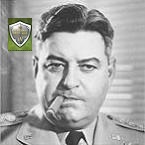TheJSFFenix
Posts: 19
Joined: 3/7/2021
Status: offline

|
Hi, it's me again with another question on scenario making:
I guess I could say it's mostly a question towards Bob Cross, since it pertains to something I'm seeing mostly in his scenarios. That thing being the looping events and making chains.
In Waterloo 1815 the French will be awarded for winning Battle of Ligny once the EEV equals 8. Now I understand how EEV works, but the unique thing I don't think I've ever seen in any scenario is that if Allies recapture those hexes, the EEV is decreased and French have to retake them again. A similar example occurs in France 1944 where to gain a supply point in Antwerp, the Allies have to clear out the Schelde, and Germans can prevent it if they recapture those hexes. I assume it's also governed by EEV.
Now my question is: How does one make it so that it's possible for two forces to play "tug of war" this way? What events do I use? I tried reading through the scenario dumps to figure that out, but since those scenarios are rather large, those events get mixed up with other events and I just can't understand those event chains.
Also another question, but somewhat similar - In Killer Angels 1863 the game turns on CSA taking and holding onto the towns across the Potomac, for which they gain VP every turn. If they hold 7+ cities by the end of the game, they get a VP award. If they hold 1 or no towns, USA gets that award. And if CSA holds more than one but less than seven towns, they there is no VP for anyone.
Now I understand that this one might be a lot to ask for, but how is that one done in terms of the events? I mean being awarded VPs for taking AND holding onto certain locations, and those VP generations ceasing upon recapture by the opposing force, but being able to start again by re-recapture? Here I just straight up gave up on trying to understand the scenario dump, sorry. But I'd still like to know, as those scenarios are really great for learning various design tricks.
|
 Printable Version
Printable Version







 New Messages
New Messages No New Messages
No New Messages Hot Topic w/ New Messages
Hot Topic w/ New Messages Hot Topic w/o New Messages
Hot Topic w/o New Messages Locked w/ New Messages
Locked w/ New Messages Locked w/o New Messages
Locked w/o New Messages Post New Thread
Post New Thread